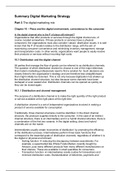Lecture 1.1
Meds classification
Chemical structure
o Same structure can have different effect
Working mechanism
o Working mechanism not always known
Behavioral effects
o Easiest, linked to disorder being treated
Nomenclature
ATC
o Anatomical therapeutic chemical
o Indication based
o Gold standard
o Can be used for other than primary disorder
o Stigma
NbN
o Neuroscience based nomenclature
o Pharmacology driven, newer
o Not acknowledged by WHO
Psychotropic drug main classes
Antipsychotics
o Conventional: haloperidol
o Atypical: risperidone
Antidepressants
o Tricyclic
o Selective Serotonin Reuptake Inhibitors (SSRI)
o Monoamine Oxidase Inhibitors (MOI)
Anxiolytics (anti-anxiety)
o Benzodiazepines: valium
o Non-benzodiazepines
Mood stabilizers
o Lithium
Hypnotics
Administration
Stages
o Absorption from administration site to the blood
o Distribution
o Metabolism
o Excretion
Oral
Parenteral: in the blood, very quick
o Intravenous
o Intramuscular
o Subcutaneously
Rectal
Topical
o Skin
o Sublingual
o Buccal (cheek)
Inhalation
1
,Distribution
Extracellular (blood plasma)
Intracellular ( water in body cells)
Speed depends on lipid solubility
o Passive diffusion through membranes following the gradient
o Higher solubility gives faster distribution
Pharmacokinetics
How does the body process the meds
Blood circulation takes +/- 1 min to go through entire body
Pharmacodynamics
Body’s response to the medication
o Distribution half-life: alpha phase
T0 until 50%
o Elimination half-life: beta phase
Degradation (liver) and
excretion (kidneys)
6th half-life
Neurotransmission
Neurons
Can perform protein synthesis
Can receive input at dendrite, soma and
axon
Has subcellular structures and internal
transport
Integration: signal cascade forwarded to
genome
Anterograde: soma axon
o Electric coding: in the cell,
integration of incoming signals
o Signal transduction: electrical signal
over the membrane
o Output: chemical
Retrograde: axon soma (always slower)
Receiving signal from axons
Axodendritic: dendritic spine receives signal
Axosomatic: some receives signal
Axoaxonic: axon receives signal
Active process: energy provided from
mitochondria
2
, Pyramidal cells
Stimulating effect: stimulate motor movement
Chandelier
Axoaxonic
Inhibitory: stops pyramidal cells
Spiny cells and Purkinje cells
Can be stimulating and activating
Interneurons
Stimulating: sensory motor
Basket cells and double bouquet cells
Inhibitory
Cell parts
1. Nucleolus
2. Nucleus
3. Ribosome
4. Vesicle
5. Rough ER
6. Golgi apparatus
7. Cytoskeleton
Smooth ER
9. Mitochondrion
10. Vacuole
11. Cytoplasm
12. Lysosome
13. Centrioles/ Centrosome
14. Membrane
Neuronal transport
Slow transport: 2mm/day
o Mostly proteins
Fast transport: 200mm/day
3



